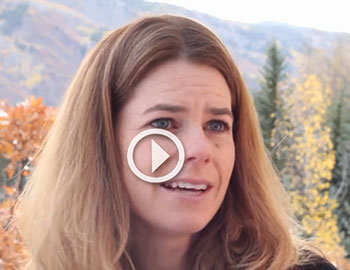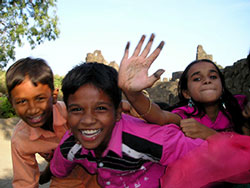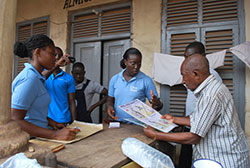
We can draw inspiration from visionaries who, like Patrice Martin, can apply design to issues like poverty.
 Over the course of her time working as a designer, Patrice Martin has used innovation for finding new avenues to achieve a result. You wind up someplace you hadn’t thought of before, as she puts it. Rewind to the starting point and think of succumbing there to constraints and pessimism – you never find that place.
Over the course of her time working as a designer, Patrice Martin has used innovation for finding new avenues to achieve a result. You wind up someplace you hadn’t thought of before, as she puts it. Rewind to the starting point and think of succumbing there to constraints and pessimism – you never find that place.
Fortunately, we can draw inspiration from visionaries who know what it is, in the words of Ms. Martin, to “give yourself the permission to really be generative and explore lots of possibilities.” In her case, this extends to applying design to ways of transforming poverty. As Co-Lead and Creative Director of IDEO.org, Ms. Martin has worked with her team to create designs that aid in addressing a range of challenges, from youth unemployment to water sanitation.
In the interview above that we filmed at the One Earth Future Forum, Ms. Martin connects the resourcefulness of design to the transformation needed to achieve global peace. If we start and stay in that place where we give in to constraints and pessimism, we’re only helping condemn ourselves to unending global violence.
 Ms. Martin points out that attempting this tough transformation can’t happen without considering emotional, cultural, and individual perspectives. This point particularly inspires me because it underlines the importance of communication in furthering a more peaceful planet, and how that relates to our roles in the communications team at OEF. We often can’t truly place ourselves in the shoes of someone who has grown up under very different circumstances, but using a variety of media we can connect their stories to others and try to give underrepresented views a place beside the dominant narratives.
Ms. Martin points out that attempting this tough transformation can’t happen without considering emotional, cultural, and individual perspectives. This point particularly inspires me because it underlines the importance of communication in furthering a more peaceful planet, and how that relates to our roles in the communications team at OEF. We often can’t truly place ourselves in the shoes of someone who has grown up under very different circumstances, but using a variety of media we can connect their stories to others and try to give underrepresented views a place beside the dominant narratives.
 It makes me think about what it means to communicate with each other across barriers, and really engage with the sources and expressions of frustrations, resentments, and humiliations that many people might not understand on the surface… to keep bringing up our sometimes unpleasant histories for the sake of not repeating them… and to make certain messages resonate, like Ms. Martin talks about. In the case of peace, something we need to think about in communications is how to position the concept so that “it feels appropriate at [an individual’s] level, that it’s a message delivered to an individual person around why this matters to you and what you can do about it?”
It makes me think about what it means to communicate with each other across barriers, and really engage with the sources and expressions of frustrations, resentments, and humiliations that many people might not understand on the surface… to keep bringing up our sometimes unpleasant histories for the sake of not repeating them… and to make certain messages resonate, like Ms. Martin talks about. In the case of peace, something we need to think about in communications is how to position the concept so that “it feels appropriate at [an individual’s] level, that it’s a message delivered to an individual person around why this matters to you and what you can do about it?”
We already know how to build brands – but we can apply that beyond corporate products. When IDEO.org designed toilets and a waste-water removal system for communities in Ghana, they couldn’t do it successfully without first spending the time to communicate with individual Ghanaians, sanitation experts, and toilet operators. They then built an entire service system of branding, uniforms, payment model, business plan, and messaging, and the project now serves 4,500 in Ghana.
 Peace may not seem as immediate a need as toilets, but it is for many, especially in places like Syria. What we now can turn to in the realm of peacebuilding is using “the tools of brand to create really powerful narratives that don’t often make it into the conversation space when we’re talking about something as important as peace.”
Peace may not seem as immediate a need as toilets, but it is for many, especially in places like Syria. What we now can turn to in the realm of peacebuilding is using “the tools of brand to create really powerful narratives that don’t often make it into the conversation space when we’re talking about something as important as peace.”
Article Details
Published
Written by
Topic
Program
Content Type
Opinion & Insights